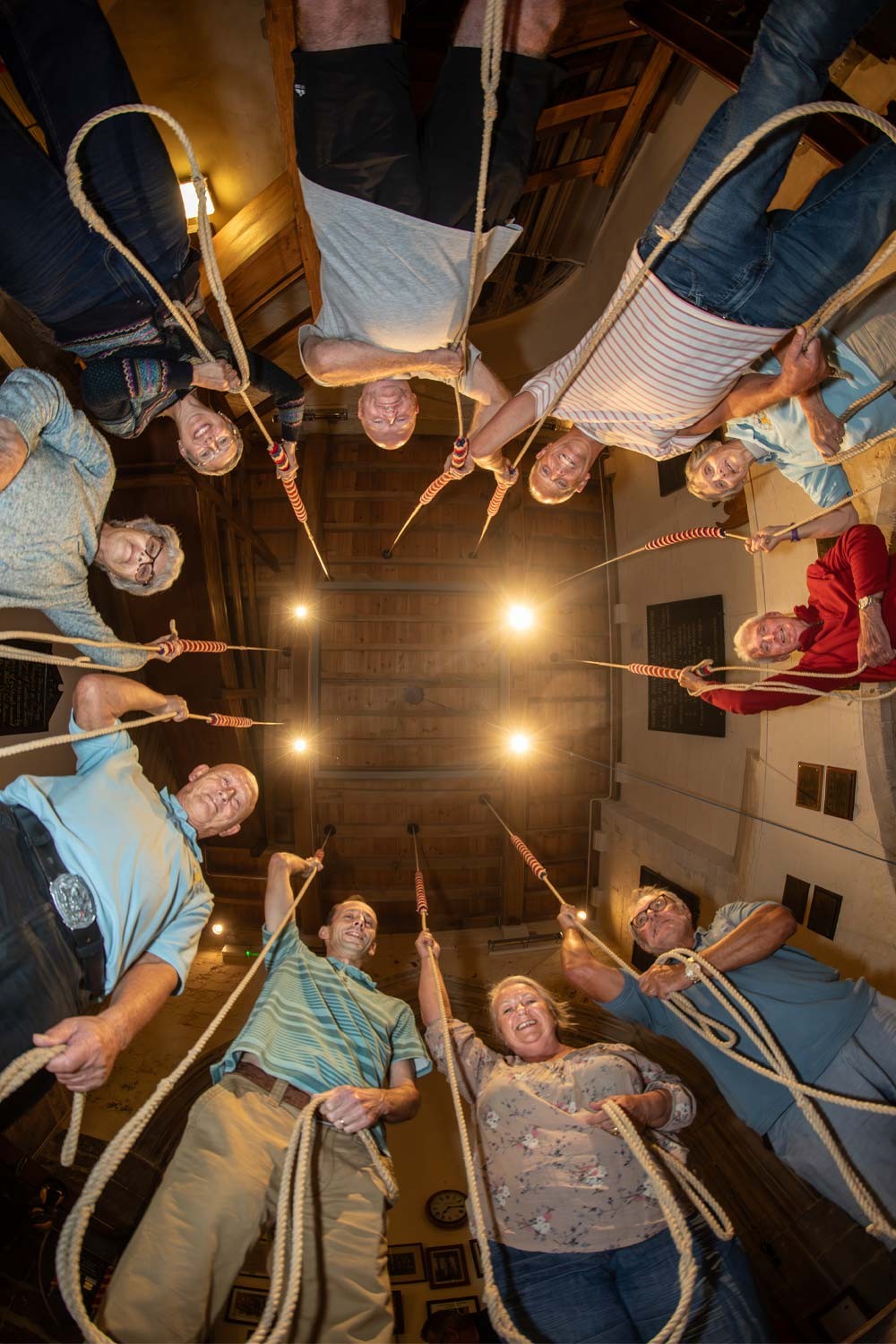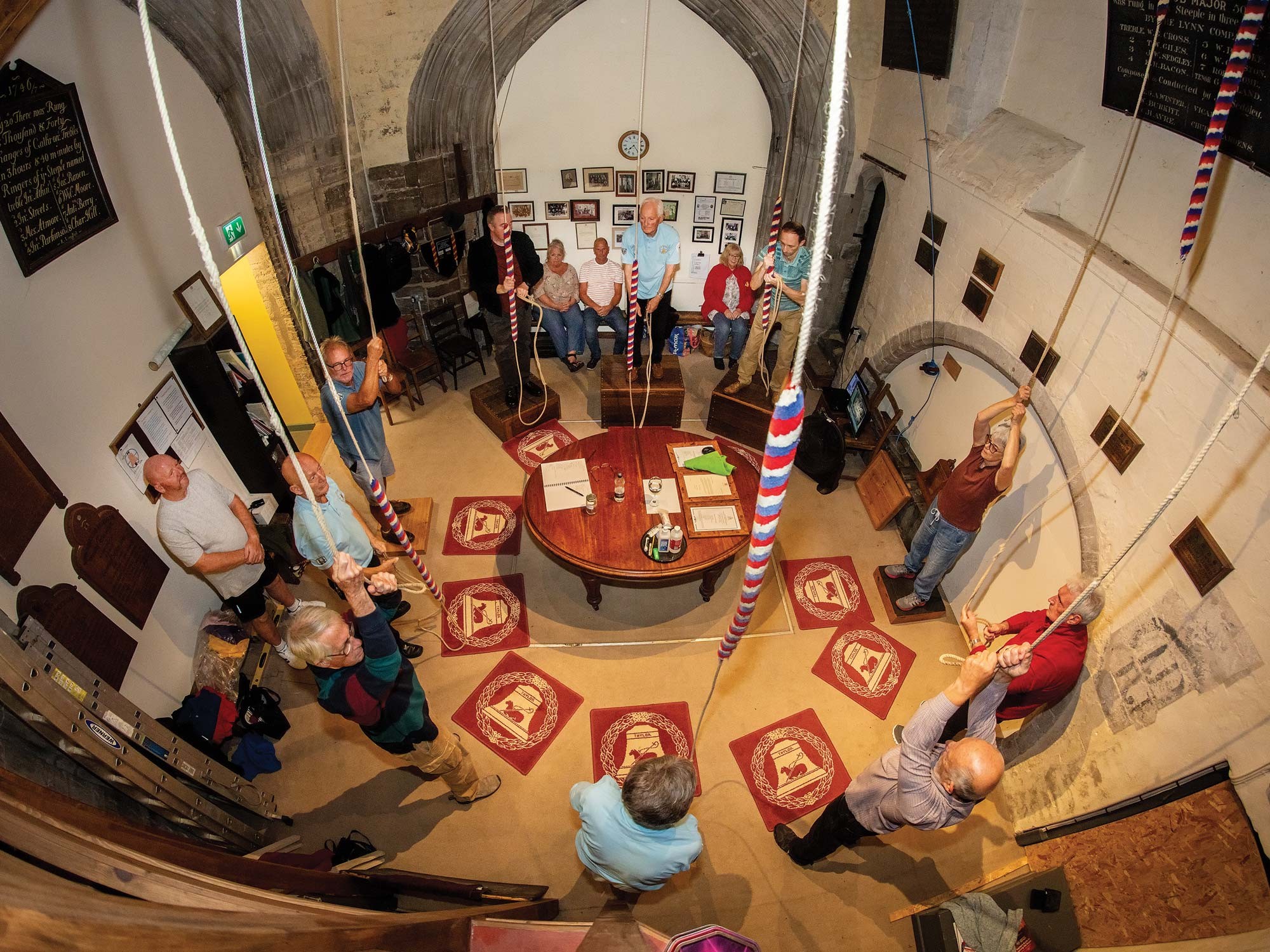
The charm of King’s Lynn’s pealing bells
Boasting three towers with working bells, King’s Lynn continues to practise the important pastime of bell ringing. Tower captain Peter Jackson shares what it’s like to keep the town’s merry chorus alive
Between The Minster with a peal of ten bells, St Nicholas’ Chapel with eight bells, and the Church of St Faith in Gaywood with six bells, King’s Lynn is home to one of Norfolk’s most active bell ringing communities. The close knit team of ringers continue a rich tradition that has been performed across the world for centuries. From bringing people together for worship, celebrations and remembrance events to marking special occasions, bell ringing is ingrained in our culture.
“There are currently around a dozen regular bellringers who practise at The Minster,” says Peter Jackson, their Tower Captain. “Gaywood has its own band as well, but we tend to collaborate and ring together, particularly at St Nicholas’ Chapel, which does not have a regular band. Unfortunately, there aren’t as many of us as there once were. Happily, there are a number of beginners who are learning the art with us.
“Four trainees are mastering the basics at The Minster as well as two at the Gaywood tower - the youngest of which is 17,” he continues. “It’s fantastic to see the younger generation taking an interest in bellringing, particularly as they pick up the skills so quickly.”
Open to everyone, bellringing is a pastime that can be enjoyed by people of all ages and walks of life. It brings people together, creating a community where ringers can form friendships, feel motivated and improve their physical fitness.
“It’s fantastic to see the younger generation taking an interest in bellringing, particularly as they pick up the skills so quickly”
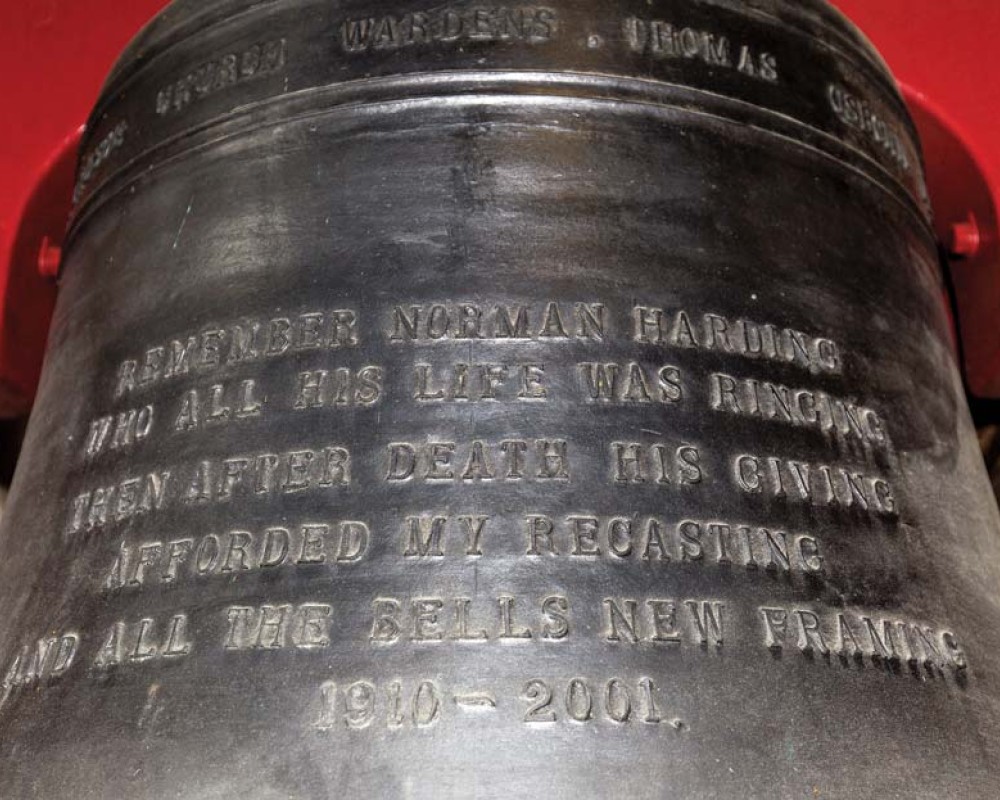
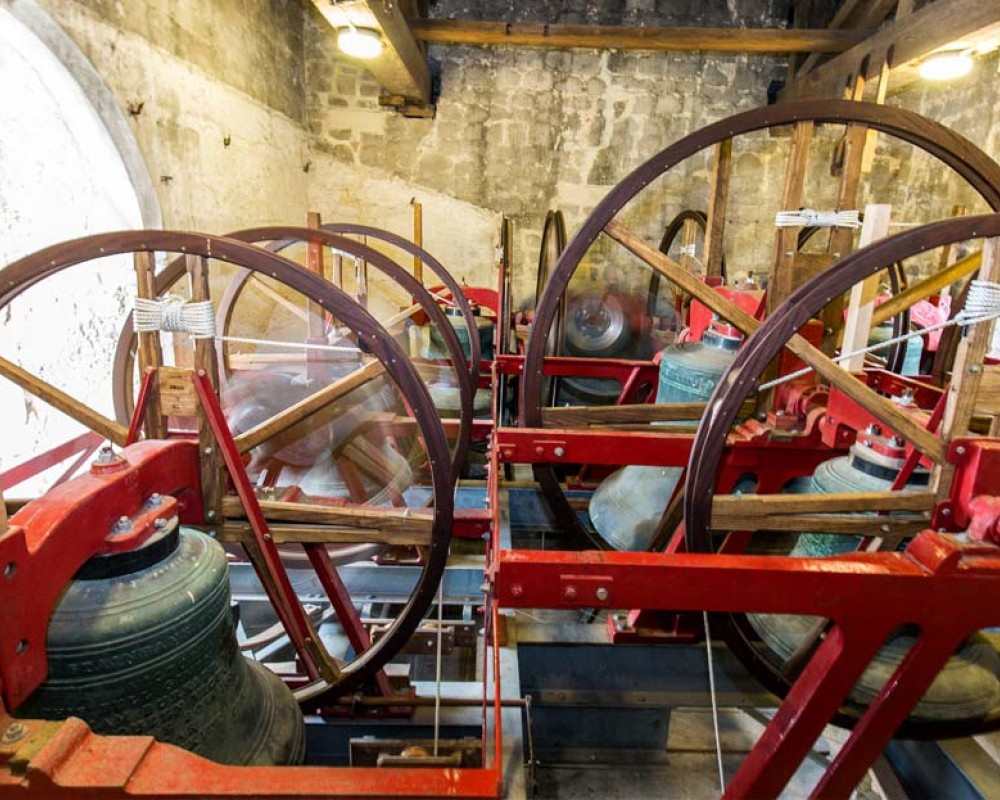
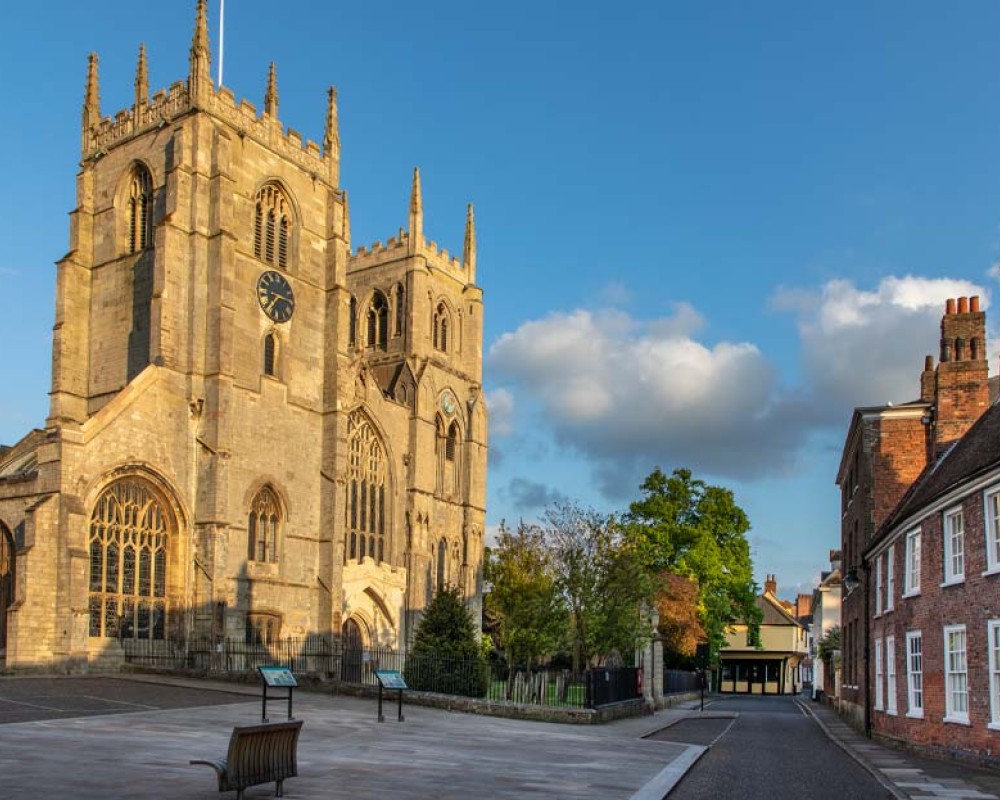
“Bellringing is a great way to keep fit, but you certainly don’t need to be a muscle man to do it,” says Peter. “It’s just about learning the technique, the bells take care of the rest.”
To teach the foundation skills needed to participate in bellringing for a service, Peter works closely with each novice to provide one-on-one training. The process typically takes around 20 to 25 hours; it’s a bit like learning to drive a car! Once they’ve mastered the fundamental basics, ringers can move on to more complex call changes and methods.
“In the beginning, ringers tend to stick to practising on one bell,” Peter explains. “I sometimes call this a ‘comfort bell’. More experienced ringers will move around the tower and will be proficient in ringing every bell from the treble (which is the lightest) to the tenor (the heaviest). To help ringers new to the bell tower hone their technique, we are in the process of arranging for a training bell to be installed.”
Designed to simulate the feel of a 3.5cwt tower bell, the training bell will be installed independently in the clock chamber, below the main bell chamber. “We are confident that this will improve the experience for our current learners and transform us as a training tower,” Peter adds. “I hope with the training bell and the positive attitude of our bellringing community here in King’s Lynn, we can keep the craft alive for many generations to come.”
Bellringing certainly has its place in the future, and it’s been an important practice in centuries past. The act of ringing a bell to call people to worship can be traced back as far as 400 AD, when it was introduced into Christian churches by Roman Senator Paulinus, Bishop of Nola in Campania. However, ringing as we know it now wasn’t established until after the Reformation - when bells were rehung and mounted on a wheel with the rope passing around it. Known as ‘change ringing’ or ‘full circle ringing’, the bells are hung so that on each stroke the bell swings through a complete circle; actually a little more than 360 degrees. Between strokes, it briefly sits poised ‘upside-down’, with the mouth pointed upwards.
Today, there are a staggering 5,000 towers in the UK set for ringing using this system, with only around 400 across the rest of the world. In Norfolk alone, there are more than 200 bell towers, 158 of which are still ringable. Remarkably, some of the installations can be dated as far back as the 14th and 15th centuries.
“At The Minster eight of the bells were installed in 1766, while one was recast in 1893 and another in 2005. Two further bells were added in 1887 to celebrate Queen Victoria’s Golden Jubilee,” says Peter. “The original eight cost £383, which would have been a great deal of money then!”
When the bells needed restoring and rehanging in 2005, it cost an astonishing £210,000. Such an undertaking was only possible thanks to The Heritage Lottery Fund and the generosity of Norman Harding, who’d been King’s Lynn’s Tower Captain for nearly 50 years.
With a new lease of life, the sweet sounds of the town’s historic bells can be heard every Sunday as well as Wednesdays between 7pm and 8.30pm when bellringing practice takes place. Every third Wednesday the practice is held at St Nicholas’ Chapel, and on Thursdays at St Faith’s in Gaywood.
Peter and his passionate fellow ringers are always thrilled to welcome newcomers to the tower. If you’d like to find out more please visit www.kingslynnminster.org/learn-bellringing/, phone 01553 767555 or email office@stmargaretskingslynn.org.uk.
